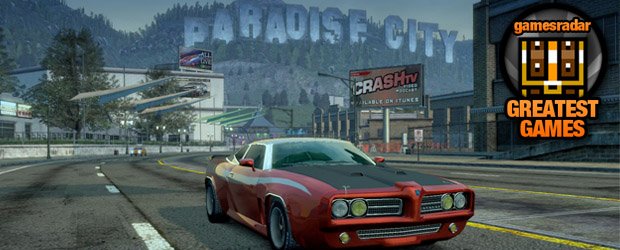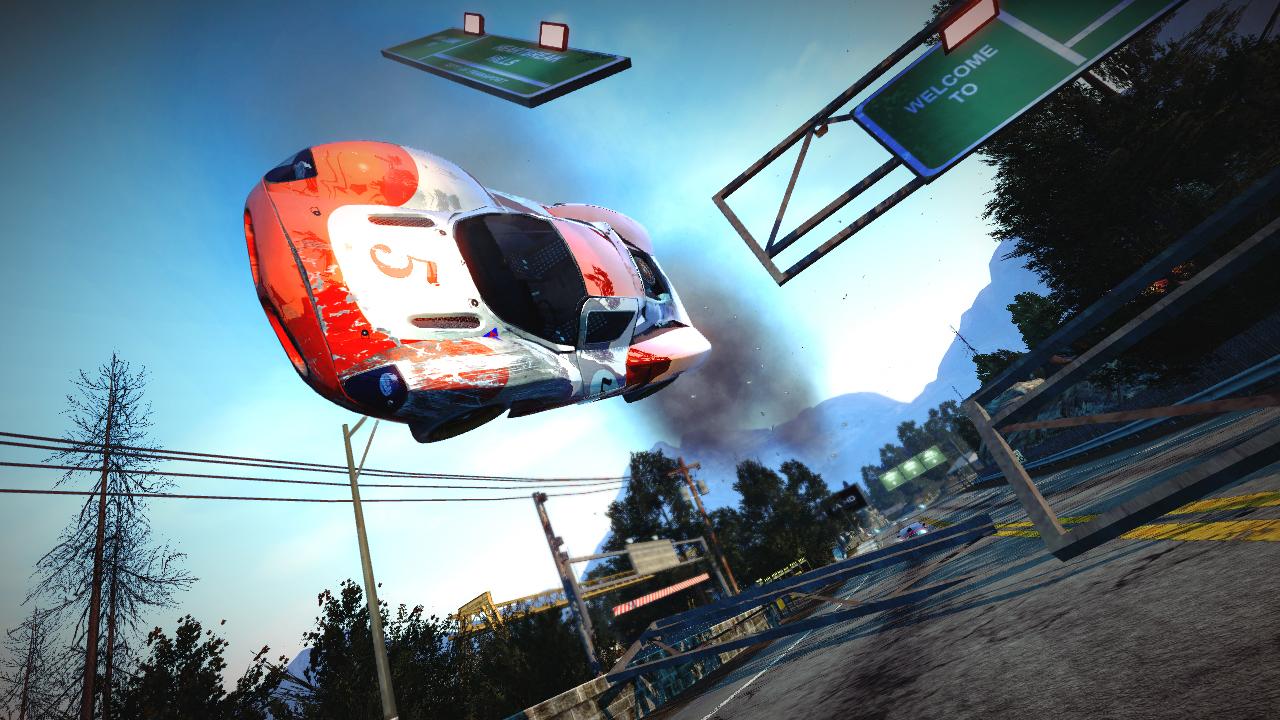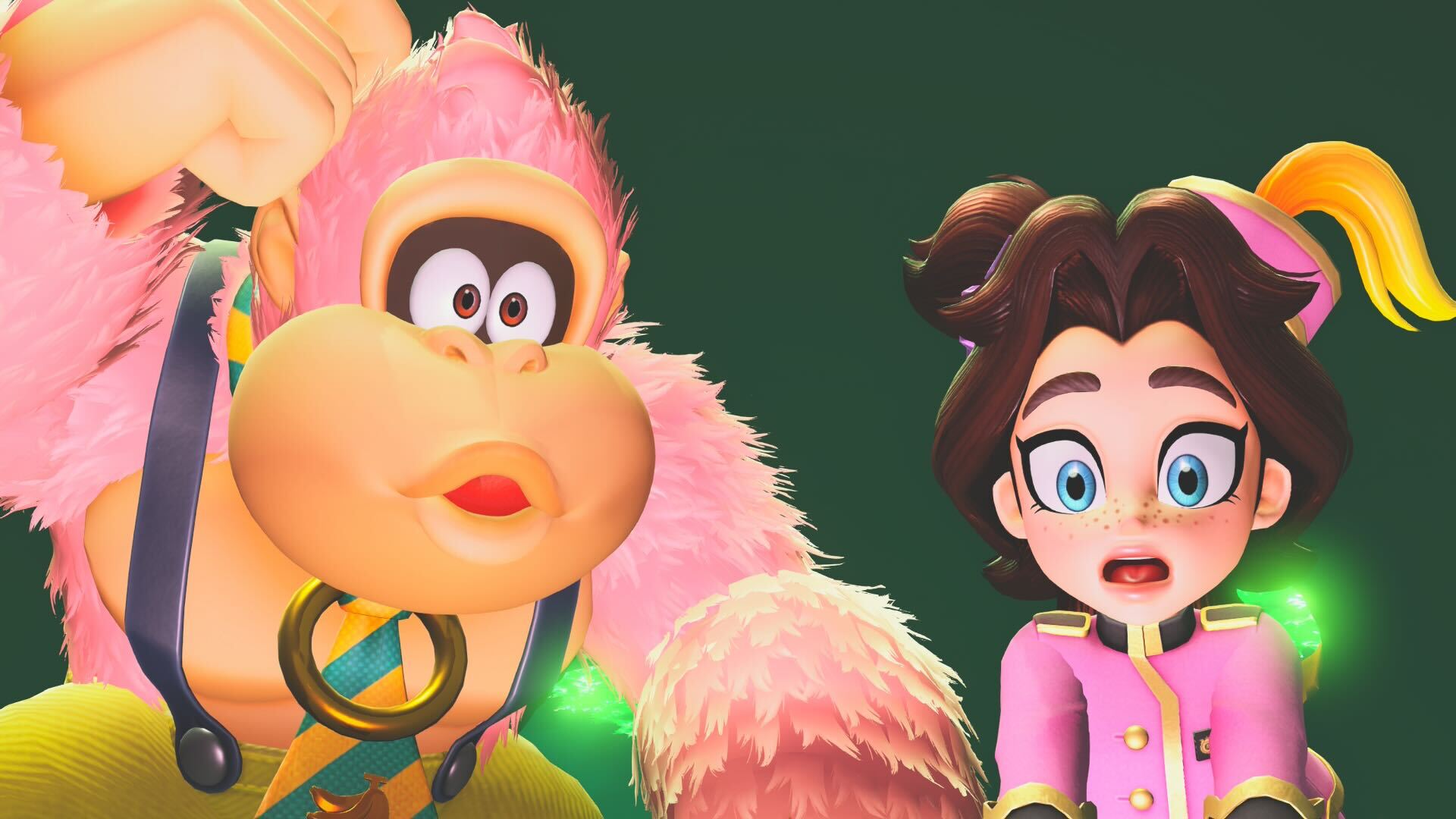Why Burnout Paradise is one of the greatest games ever made
Take me home

For the past 30 years most racing games told us exactly where to go. They’d draw a line down a street and connect it to make a circle, putting some ribbons at the end to let us know we won. They would block off side roads with invisible walls and force us along predetermined paths, warning us when we drove the wrong way and punishing us for going off-road. While some would occasionally throw us a bone with an alternate path or a secret, these, too, were pre-planned, making the racing genre home to the fastest, most exciting on-rails games around. And then Burnout Paradise came along, and, for lack of a better turn of phrase, went off the rails.
It didn’t need to, either. Burnout 3: Takedown set a new standard for the arcade-racing genre, and Burnout Revenge upped the ante yet again with new features and improved visuals. That method of racing had all but been perfected, and Criterion was well within its rights to do what most other developers would have done, and run the series into the ground with yearly iterative sequels, each adding better versions of the crash-fueled mayhem. But, instead, it opted to innovate, making a game that, while divisive among fans of the series, is one of the greatest games of all time
See the game in action to find out why we love it so much
Though it wasn’t the first game to attempt open-world racing, it was far and away the best. Many things made this possible, but the largest contributor was likely Paradise City itself, the titular location of the racer (and title to the song that played during the game’s menus). Paradise City was, as the name suggests, a racing utopia, built from the ground up to be torn through at high speeds.
The roads are carved perfectly for a near-infinite number of tracks and the streets are filled with cars to smash into at high speeds. Any given race would allow you a starting spot and ending point, and allow you to choose your own path--and though there are obviously better ways to drive than others, the liberty to go anywhere is freeing. The roads and paths were subtly constructed in a way that any failure simply opened up a new opportunity, with all roads, in one way or another, leading to the ending as long as you were looking for it. We didn’t realize it at first, but the world was built in such a way where we’d slowly map the city inside of our heads as we went from event to event, noting the locations of lighthouses, buildings, and neighborhoods, just as we do in the real world.

But, as is the case with other games in the Burnout series, racing is only one cog in the machine. All of the other elements that the series is known for, from the big crashes to the incredible stunts, were spread and strewn around Paradise City, mixed into the environment in a naturally, enjoyable way.
Weekly digests, tales from the communities you love, and more
Hollander Cooper was the Lead Features Editor of GamesRadar+ between 2011 and 2014. After that lengthy stint managing GR's editorial calendar he moved behind the curtain and into the video game industry itself, working as social media manager for EA and as a communications lead at Riot Games. Hollander is currently stationed at Apple as an organic social lead for the App Store and Apple Arcade.



